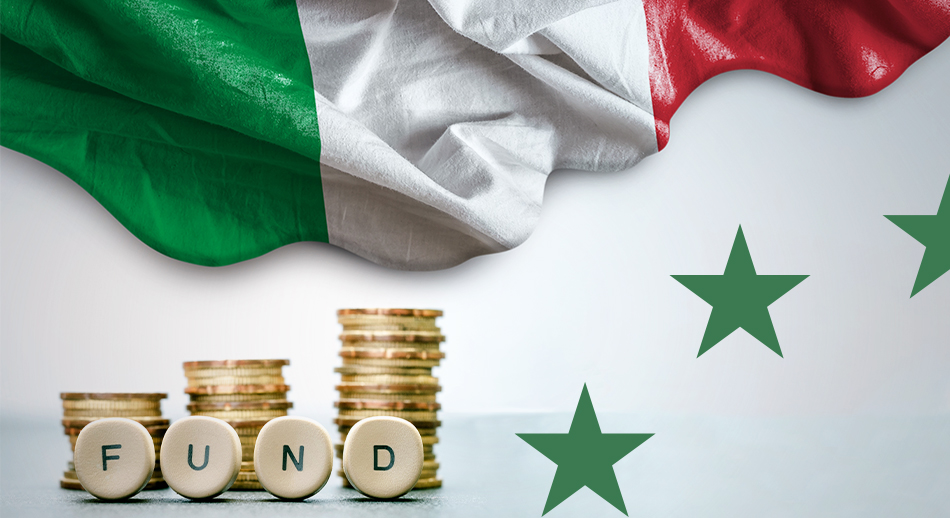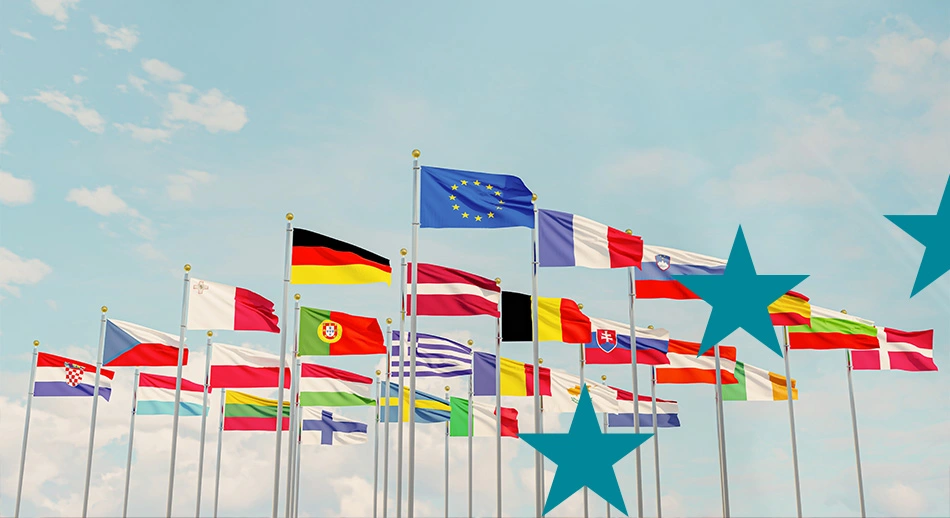News on Structural Funds 2021-2027 programming: available funds, Partnership Agreement, regional strategic documents and in-depth videos.
A summary of previous episodes
As we know, Structural Funds (ERDF and ESF+) are managed at a decentralized level through Regional and National Operational Programs (ROPs and NOPs), whose definition and approval takes time and numerous steps at the European, national and regional levels. For this reason, the corresponding section of the Guide is not yet updated, unlike the section on the community programs . The Cooperation Territorial also follows similar logic (it is funded by the ERDF) and somewhat longer time frames.
We have already published two important articles regarding the 2021-2027 programming of the Structural Funds, respectively about a year ago and about six months ago . We resume here, briefly, its main points:
- The Sources. The Platforms. OpenCoesione (Italian) and CohesionData (EU) allow people to take stock of 2014-2020 programming and learn about the progress of 2021-2027 programming;
- The Process. The community part of the Structural Funds programming process was concluded with the approval of the Multiannual Financial Framework, the applicable Regulations and the allocation of funds among EU countries. In contrast, the national and regional parts of the process (Partnership Agreement, Strategic Documents, ROPs and NOPs) are still ongoing;
- Available Funds. Italy’s share of Structural Funds has already been defined at about 42 billion euros, divided between ERDF (about 27) and ESF+ (about 15), plus about 37 billion euros for agriculture and rural development and, of course, the national co-financing share;
- What’s new. The new programming includes. 5 thematic objectives , aimed at building a “smarter,” “green,” “connected,” “social,” and “citizen-friendly” Europe. A simplification effort Of the procedures of the standards. The operation of the Structural Funds will be supported by new instruments (such as this o this ) and their rules will also apply to other programs (such as this ).
The allocation of funds by region and program.
The Partnership Agreement is the document that regulates and plans the organization of Structural Funds in Italy. It is drafted in consultation among national, regional and European institutions. One is available late September draft.
The draft provides an indicative idea of the allocation of funds by region and by operational program, captured in summary in the table below (figures in millions of euros).
| Programmi Operativi Nazionali (PON) | Totale | FESR | FSE+ | Cofin. Naz. | Altro |
|---|---|---|---|---|---|
| Innovazione, ricerca, competitività per la transizione e digitalizzazione | 5.636 | 3.573 | 2.063 | ||
| Sicurezza e legalità | 583 | 350 | 233 | ||
| Equità in Salute | 250 | 150 | 100 | ||
| Salute | 375 | 225 | 150 | ||
| Inclusione e lotta alla povertà | 4.127 | 420 | 1.742 | 1.965 | |
| Giovani donne e lavoro | 5.089 | 2.683 | 2.406 | ||
| Scuola e competenze | 3.828 | 660 | 1.373 | 1.796 | |
| METRO plus e città medie Sud | 2.908 | 904 | 648 | 1.356 | |
| Cultura | 648 | 389 | 259 | ||
| Capacità per la coesione | 1.267 | 570 | 47 | 650 | |
| Fondo per una Transizione Giusta | 1.211 | 182 | 1.030 | ||
| FEAMPA (Affari Marittimi, Pesca e Acquacultura) | 987 | 469 | 518 | ||
| TOTALE PON | 26.909 | 7.016 | 6.718 | 11.629 | 1.548 |
| Programmi Operativi Regionali (POR) | Totale | FESR | FSE+ | Cofin. Naz. | Altro |
| Abruzzo | 1.088 | 272 | 163 | 653 | |
| Basilicata | 1.240 | 542 | 146 | 552 | |
| Calabria | 4.004 | 1.763 | 458 | 1.782 | |
| Campania | 8.798 | 3.874 | 1.007 | 3.917 | |
| Emilia-Romagna | 2.048 | 426 | 393 | 1.229 | |
| Friuli-Venezia Giulia | 739 | 157 | 138 | 443 | |
| Lazio | 3.420 | 727 | 641 | 2.052 | |
| Liguria | 1.088 | 231 | 204 | 653 | |
| Lombardia | 3.507 | 755 | 648 | 2.104 | |
| Marche | 1.102 | 293 | 148 | 661 | |
| Molise | 508 | 224 | 58 | 226 | |
| PA Bolzano | 397 | 84 | 74 | 238 | |
| PA Trento | 341 | 72 | 64 | 204 | |
| Piemonte | 2.812 | 598 | 527 | 1.687 | |
| Puglia | 7.585 | 3.010 | 782 | 3.793 | |
| Sardegna | 2.934 | 1.292 | 336 | 1.306 | |
| Sicilia | 9.305 | 4.101 | 1.061 | 4.142 | |
| Toscana | 2.312 | 492 | 433 | 1.387 | |
| Umbria | 813 | 209 | 116 | 488 | |
| Valle d'Aosta | 174 | 37 | 33 | 104 | |
| Veneto | 2.063 | 438 | 387 | 1.238 | |
| TOTALE POR | 56.278 | 19.597 | 7.817 | 28.859 | - |
| TOTALE FONDI | 83.187 | 26.613 | 14.535 | 40.488 | 1.548 |
Figures in millions of euros at current prices. Possible discrepancies in totals due to rounding.
Source: draft Partnership Agreement 27/9/2021
The organization of objectives in the Structural Funds
A second important aspect of the draft Partnership Agreement is the thematic organization, which incorporates the 5 major thematic objectives (Smarter Europe, “Green,” “Connected,” “Social,” and “Closer to Citizens”) and the specific objectives stated in the ERDF e ESF+ . The document provides a justification of thematic choices and priorities and a description of the main types of interventions planned.
At the end of this article we recall the main objectives envisaged in the draft Partnership Agreement (PA) and their relation to the ERDF and ESF+ regulations. This in-depth study provides an overview of the thematic scope of action of the Structural Funds.
The progress of Structural Funds 2021-2027 in the Italian Regions.
Structural Funds programming also proceeds at the regional level, from which, through ROPs, the calls that are most accessible and closest to our territories take shape. We update to follow the review (already provided in one of our previous article) of pages from which you can get information and updates on ROPs in your region. We indicate, where possible, some particularly significant policy documents that are already available.
Emilia-Romagna ( 1 )
Liguria
PA Bolzano ( 1 | 2 )
In-depth videos on cohesion policy
To learn more about issues and best practices related to the management of the Structural Funds for the 2021-2027 period, we recommend a series of webinars (accessible as videos ) made available to the European Commission. They dwell in particular on aspects related to “policy,” evaluation and some of the key themes of the seven-year period : their perspective is therefore “macro,” but also for this reason interesting and applicable to different areas of Europlanning.
- Opening Session
- The value of evaluation for a performance-oriented policy
- The European Green Deal
- A Europe ready for the digital age
- An economy that works for people (SMEs and competitiveness)
- How evidence-based policy can keep pace with global changes
- An economy that works for people (the social dimension)
- Challenges and opportunities of member state evaluations, spatial dimensions, lessons learned, and impact
- Use of data for evaluations
- Assessment, a compass in change
- Summary and conclusions
Structural funds: we are getting closer
In conclusion, although precise information on future ROPs and NOPs is not yet available, we are beginning to have very interesting guidance material on which you can begin to prepare. We will continue to update you, keep following us.
Insight
Objectives of the draft Partnership Agreement (PA) and the ERDF and ESF+ regulations.
1. A Smarter Europe (ERDF)
- AP (1.1.): Research and innovation.
- ERDF (1.I.): develop and strengthen research and innovation capabilities and the introduction of advanced technologies;
- AP (1.2.): Digitization.
-
- ERDF (1.II.): enabling citizens, businesses, research organizations and public authorities to reap the benefits of digitization;
- AP (1.3.): SME growth and competitiveness.
- ERDF (1.III.): strengthening sustainable growth and competitiveness of SMEs and job creation in SMEs, including through productive investment;
- AP (1.4.): Skills for industrial transition.
- ERDF (1.IV.): developing skills for smart specialization, industrial transition and entrepreneurship.
2. A Greener Europe (ERDF)
- AP (2.1.): Energy.
- ERDF (2.I-II-III): promote energy efficiency and reduce greenhouse gas emissions; promote renewable energy; develop smart energy storage systems, networks and facilities;
- AP (2.2.): Climate and risks.
- ERDF (2.IV): promoting climate change adaptation, disaster risk prevention and resilience, taking ecosystem-based approaches into consideration;
- AP (2.3.): Water resources, waste management and circular economy.
- ERDF (2.V-VI): promoting access to water and its sustainable management; promoting the transition to a circular and resource-efficient economy;
- AP (2.4.): Biodiversity and pollution.
- ERDF (2.VII): strengthen nature protection and preservation, biodiversity and green infrastructure, including in urban areas, and reduce all forms of pollution;
- AP (2.5.): Sustainable urban mobility.
- ERDF (2.VIII): promoting sustainable multimodal urban mobility as part of the transition to a zero net carbon economy.
3.A More Connected Europe (ERDF)
- AP (3.1.): TEN-T networks.
- ERDF (3.I.): develop an intermodal, safe, smart, climate change resilient and sustainable TEN-T network;
- AP (3.2.): Wide area mobility.
- ERDF (3.II.): develop and strengthen smart, intermodal, climate-resilient, and sustainable local, regional, and national mobility, including improving access to the TEN-T network and cross-border mobility.
4. A more social and inclusive Europe (ERDF / ESF+)
- AP (4.1.): Employment.
- ERDF (4.I.): strengthen the effectiveness and inclusiveness of labor markets and access to quality employment through the development of social infrastructure and the promotion of the social economy;
- ESF (4.a-b-c-d): Improve access to employment and activation measures for all job seekers, particularly young people, especially through the implementation of the Youth Guarantee, the long-term unemployed and disadvantaged groups in the labor market, and inactive people, including through the promotion of self-employment and the social economy; Modernize labor market institutions and services to assess and anticipate skills needs and ensure timely and tailored assistance and support in the context of matching supply and demand, labor market transitions and mobility; promote gender-balanced labor market participation, equal working conditions, and a better work-life balance, including through access to affordable childcare and dependent care services; promote the adaptation of workers, enterprises, and entrepreneurs to change, active and healthy aging, as well as a healthy and appropriate work environment that takes into account health risks;
- AP (4.2.): Education, training and skills.
- ERDF (4.II.): improve equal access to quality and inclusive education, training and lifelong learning services through the development of accessible infrastructure, including by promoting the resilience of online and distance education and training;
- ESF (4.e-f-g): Improve the quality, inclusiveness, effectiveness and labor market relevance of education and training systems, including through the validation of nonformal and informal learning, to support the acquisition of key competencies, including entrepreneurial and digital competencies, and by promoting the introduction of dual training systems and apprenticeships; Promote equal access to and completion of inclusive and quality education and training, particularly for disadvantaged groups, from early childhood education and care, through general and vocational education and training, to the tertiary level and adult education and learning, including by facilitating mobility for learning for all and accessibility for people with disabilities; Promote lifelong learning, particularly opportunities for skill level upgrading and flexible retraining for all, taking into account entrepreneurial and digital skills, better anticipating change and new skills demands based on labor market needs, facilitating vocational reorientation, and promoting occupational mobility;
- AP (4.3.): Inclusion and social protection.
- ERDF (4.III-IV-V.): promote the socioeconomic inclusion of marginalized communities, low-income families, and disadvantaged groups, including people with special needs, through integrated actions, including housing and social services; promote the socioeconomic integration of third-country nationals, including migrants, through integrated actions, including housing and social services; ensure equal access to health care and promote the resilience of health care systems, including primary health care, as well as promote the transition from institutional to family-based and community-based care.
- ESF (4.h-i-j-k-l-m): Foster active inclusion, to promote equal opportunities, non-discrimination, and active participation, and improve employability, particularly of disadvantaged groups; promote the socioeconomic integration of third-country nationals, including migrants; promote the socioeconomic integration of marginalized communities such as the Roma; improve equal and timely access to quality, sustainable, and affordable services, including services that promote access to housing and person-centered care, including in the health sector; modernize social protection systems, including by promoting access to social protection, paying special attention to children and disadvantaged groups; improve accessibility, including for people with disabilities, the effectiveness and resilience of health systems and long-term care services; promote the social integration of people at risk of poverty or social exclusion, including poor people and children; combat material deprivation through the provision of food and/or basic material assistance to poor people, including children, and establish accompanying measures to support their social inclusion;
- AP (4.4.): Culture and tourism.
- ERDF (4.VI.): strengthening the role of culture and sustainable tourism in economic development, social inclusion and social innovation.
5. A Europe Closer to the Citizens (ERDF).
- AP: Interventions planned for Metropolitan Areas, Medium Urban Areas and other territorial systems, Inland Areas, Coastal Areas., with content declined accordingly (to expression of local coalitions) and support for territorial actors.
- ERDF (5.I-II): promote locally integrated and inclusive social, economic and environmental development, culture, natural heritage, sustainable tourism and security in urban and non-urban areas.




